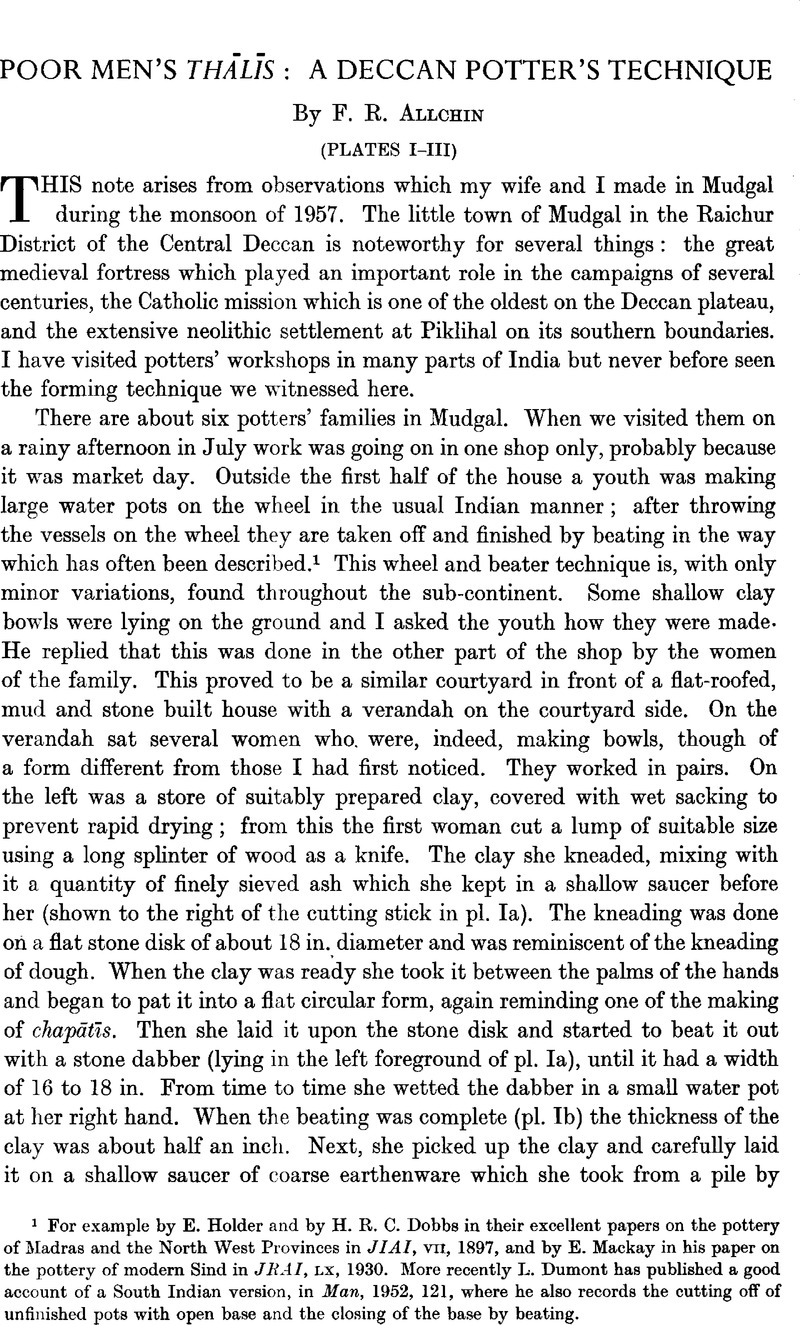Article contents
Poor Men's Thàlīs: A Deccan Potter's Technique
Published online by Cambridge University Press: 24 December 2009
Abstract

- Type
- Articles
- Information
- Copyright
- Copyright © School of Oriental and African Studies, University of London 1959
References
1 For example by E. Holder and by H. R. C. Dobbs in their excellent papers on the pottery of Madras and the North West Provinces in JIAI, VII, 1897, and by E. Mackay in his paper on the pottery of modem Sind in JRAI, LX, 1930. More recently Dumont, L. has published a good account of a South Indian version, in Man, 1952, 121, where he also records the cutting off of unfinished pots with open base and the closing of the base by beating.Google Scholar
1 Kosambi, D. D., An introduction lo the study of Indian history, Bombay, 1956, 45–6, and pl. 1–2.Google Scholar
2 Marshall, J., Taxila, Cambridge, 1951, II, 485.Google Scholar
3 See Childe's, G. chapter on ‘Rotary motion’ in the History of technology, I, particularly 198–202.Google Scholar
4 Foster, G. M., ‘Pottery making in Bengal’, Southwestern Journal of Anthropology, xii, 1956, 398–402.Google Scholar
5 Childe, loc. cit., 201.
1 Mackay, loe. cit., 128,
2 Childe, loc. cit., 196,
1 The Taxila examples are given by Marshall, loc. cit., 502 and 424; and the information regarding the Indus valley flnds is from Mackay, loc. cit., 129–30.
1 Dumont, loc. cit., mentions it in connexion with large water pots, but it was described to me, as a means of making shallow thàlï like bowls, by the potters of Begumpet, near Hyderabad.
2 Lal, B. B., ‘Excavations at Hastinàpura’, Ancient India, 10–11, 1954, 138 ff. The thàlï from Ahiechatra illustrated in fig. 1 A is Lal&s fig. 37, 1.Google Scholar
3 Ancient India, 1, 1946, 55–9.Google Scholar
1 AncierU India, 2, 1946, fig. 12.Google Scholar
2 Ancient India, 4, 1948, fig. 10, no. C 15.Google Scholar
- 5
- Cited by


